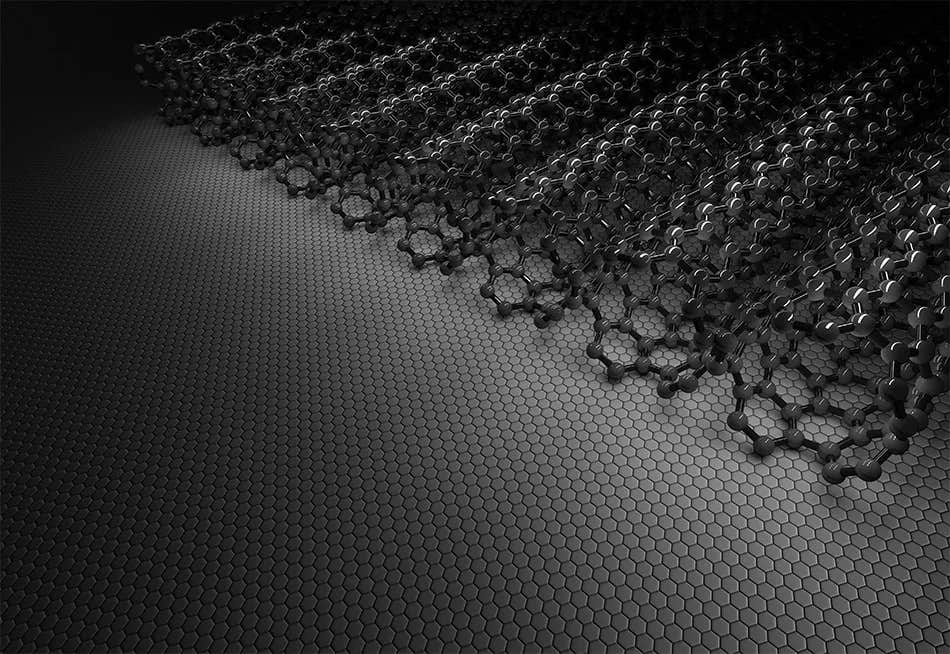Scientists create nanotubes that point in one direction
Researchers achieve aligned tungsten disulfide nanotubes, resolving orientation challenges and unlocking new potential for advanced electronic devices.

For the first time, aligned tungsten disulfide nanotubes have been successfully synthesized, promising transformative applications in semiconductors and optoelectronics. (CREDIT: Shutterstock.com)
Tungsten disulfide nanotubes (WS2-NTs), first discovered in 1992, have long captured the attention of researchers for their potential applications in advanced technologies. These cylindrical nanostructures, composed of rolled tungsten disulfide sheets, possess unique properties that make them valuable for uses ranging from energy storage to optical sensors.
Unlike carbon nanotubes, which vary between metallic and semiconducting properties based on their structure, WS2-NTs are consistently semiconducting. This characteristic makes them ideal for semiconductor and optoelectronic devices. However, a major obstacle has hindered their broader application: achieving controlled alignment in nanotube arrays.
Nanomaterials such as nanotubes and nanowires are often used in macroscopic devices, but their orientation is critical to optimizing performance. Randomly oriented nanotubes result in significantly reduced carrier mobility and isotropic optical responses, which obscure the unique properties of the material.
For instance, carrier mobility is a measure of how efficiently charge carriers like electrons move through a material. In randomly aligned nanotubes, this efficiency drops drastically, limiting their usefulness in high-performance devices.
Optical responses also suffer when nanotubes are randomly oriented. Unique anisotropic properties, such as direction-dependent light absorption and emission, are effectively neutralized in such arrangements. This means the distinctive characteristics that make WS2-NTs special are lost when the tubes are jumbled together.
For carbon nanotubes, various methods have been developed to achieve alignment, including arrayed growth techniques and dispersal-based alignment methods. Unfortunately, similar progress for WS2-NTs has been elusive.
Past efforts to synthesize WS2-NTs relied on two main approaches: converting tungsten oxide nanowires (WOx-NWs) into nanotubes or directly growing WS2-NTs from metal precursors. While the first method can produce nanotubes at scale, it often involves multiple steps, different substrates, and limited control over morphology.
The process typically begins with synthesizing WOx-NWs, dispersing them, and then sulfurizing them to convert into WS2-NTs. These steps introduce inefficiencies and variability. The second method, though simpler, has never successfully controlled the growth direction of WS2-NTs. These challenges have left researchers searching for a more effective approach.
Published in the journal, Nano Letters, a research team led by Professor Kazuhiro Yanagi at Tokyo Metropolitan University has developed a pioneering method to synthesize aligned WS2-NTs.
Related Stories
The team utilized a sapphire substrate with a specific crystallographic orientation to serve as a template for nanotube growth. Sapphire’s unique crystalline structure provides a highly ordered surface, enabling the controlled alignment of nanotubes during synthesis.
Under carefully controlled conditions, gases containing tungsten and sulfur were introduced to the substrate via chemical vapor deposition. By fine-tuning the reaction temperature and gas flow, the researchers achieved something unprecedented: WS2-NTs all aligned along a specific crystallographic direction. This alignment was achieved by precisely managing the orientation of tungsten oxide nanowires before converting them into nanotubes.
"This is the first time that arrayed tungsten disulfide nanotubes have been grown," said Professor Yanagi. The breakthrough addresses the longstanding issue of randomly oriented nanotubes, which have hampered their performance in practical applications. The controlled alignment not only improves their optical and electronic properties but also simplifies their integration into devices.
The success of this technique lies in the meticulous control of growth parameters. The team first synthesized arrayed WOx-NWs on a sapphire substrate, which were then converted into WS2-NTs via a sulfurization process. Previous studies had reported the arrayed growth of various materials—such as carbon nanotubes, SnO2, and ZnO—on sapphire. However, achieving this for WS2-NTs required precise adjustments to the temperature and reaction conditions.
Using this method, tungsten oxide nanowires were aligned along a specific crystallographic plane before being transformed into nanotubes. This streamlined approach eliminates the need for additional substrates and dispersion techniques, simplifying the fabrication process and improving the scalability of aligned WS2-NTs.
Researchers also optimized the sulfurization step to ensure that the nanotubes retained their aligned structure during conversion. This was a critical factor in maintaining the integrity and performance of the nanotube arrays.
The team’s use of sapphire substrates also underscores the importance of surface properties in nanomaterial synthesis. Sapphire’s ability to guide the growth direction of nanowires and nanotubes has proven essential in achieving alignment. By leveraging this property, the researchers have set a new benchmark for nanotube fabrication.
Aligned WS2-NTs promise transformative applications in electronic and optoelectronic devices. Random orientations in nanotube arrays mask the material’s anisotropic properties, which are essential for advanced device performance.
In contrast, aligned nanotubes retain their unique optical and electronic characteristics even in collective arrangements. For instance, the team demonstrated that their WS2-NT arrays exhibit anisotropic interactions with light, paving the way for innovative applications in photonic devices.
These aligned structures also enhance carrier mobility, a crucial parameter in semiconductor devices. By ensuring that nanotubes are uniformly oriented, devices can fully harness the inherent properties of the material. This development opens up possibilities for more efficient transistors, solar cells, and sensors.
For example, aligned nanotube arrays can improve the performance of photovoltaic devices by maximizing light absorption and charge transport efficiency. Similarly, in sensors, the enhanced carrier mobility of aligned nanotubes can lead to faster and more accurate responses.
The implications extend beyond electronics. WS2-NTs are also being explored for use in lubrication, catalysis, and nanocomposites. The ability to produce aligned arrays could enhance their performance in these applications as well.
For instance, in catalysis, the uniform orientation of nanotubes can improve the accessibility of active sites, boosting reaction efficiency. In nanocomposites, aligned nanotubes can provide superior mechanical and thermal properties compared to randomly oriented structures.
The creation of aligned WS2-NTs marks a significant milestone in nanotechnology. Beyond improving device performance, the technique offers a scalable and efficient method for fabricating nanotube arrays. This breakthrough sets the stage for integrating WS2-NTs into real-world applications, from energy storage to advanced computing.
The work by Professor Yanagi and his team exemplifies how innovation in synthesis techniques can overcome long-standing challenges in materials science. By addressing the issue of alignment, they have unlocked the potential of tungsten disulfide nanotubes to revolutionize next-generation devices. This achievement also paves the way for further exploration into the properties and applications of aligned nanostructures.
As researchers continue to refine the synthesis process, the possibilities for WS2-NTs are likely to expand. The alignment technique could be adapted for other transition-metal dichalcogenide materials, opening up new avenues for research and application.
With their unique combination of properties and the ability to achieve controlled alignment, WS2-NTs are poised to play a central role in the future of nanotechnology.
Note: Materials provided above by The Brighter Side of News. Content may be edited for style and length.
Like these kind of feel good stories? Get The Brighter Side of News' newsletter.
Joshua Shavit
Science & Technology Writer | AI and Robotics Reporter
Joshua Shavit is a Los Angeles-based science and technology writer with a passion for exploring the breakthroughs shaping the future. As a contributor to The Brighter Side of News, he focuses on positive and transformative advancements in AI, technology, physics, engineering, robotics and space science. Joshua is currently working towards a Bachelor of Science in Business Administration at the University of California, Berkeley. He combines his academic background with a talent for storytelling, making complex scientific discoveries engaging and accessible. His work highlights the innovators behind the ideas, bringing readers closer to the people driving progress.



